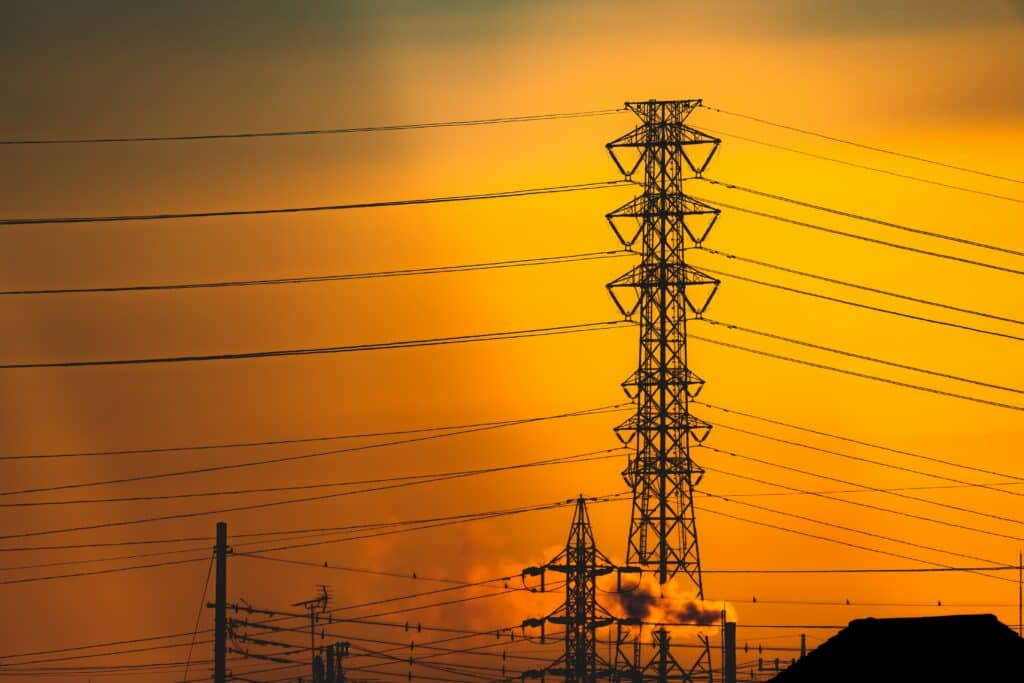Lessons learned from Texas and looking ahead
This is the fourth installment of the Topic of the Month on security of supply
At the peak of the Texas freeze of February 2021, more than 4.5 million customers, equaling more than 10 million people or about one out of three Texans, were left without electricity, some for several days. There was never a real blackout, i.e. a complete collapse of the frequency, but due to the large shortfall of generation, rolling blackouts became multi-day controlled outages. The Perryman Group, an economic consultancy based in Texas, estimates economic losses between $197.2 billion to $295.8 billion.
In this fourth installment of the June blog series on security of supply, I first describe the identified causes of the power interruptions. Second, I discuss measures to avoid a repetition of this event. After, I briefly comment on the Texan market design. I end with a look ahead.
The Texas freeze of February 2021
What went wrong in February 2021? Many analyses have been done. I mostly base my summary on the findings of a recently published academic article “Cascading risks: Understanding the 2021 winter blackout in Texas” written by a group of ten academics and practitioners and a webinar by Prof. Ross Baldick “Texas Extreme Weather and Blackouts”.
On the demand side, high demands for electric heating led to an unseen winter peak. About 60 % of Texans’ homes are heated with electricity being resistive heating or via heat pumps. On the supply side, the power cuts were caused by a combination of complex issues. One of the major causes was the failure to sufficiently winterize the electricity and gas systems, and the feedback between the failures in both systems making the situation worse.
Even though renewables are on the rise with Texas being the leading US state in terms of onshore wind deployment (> 30 GW) and ranked 2nd in terms of solar PV (>9 GW), currently it remains mostly dependent on fossil fuels to generate electricity. More precisely, in 2020, 23% of electricity was produced by wind and 2% by solar. The remainder was generated from natural gas-fired plants (46%), coal fired-power plants (18%) and nuclear (11%).
In February 2021, as demand reached unprecedented heights (>70 GW), about 45 GW of power generators were offline due to the freeze. About two-thirds of this generation was from thermal generators, the majority being gas-fired power plants but also coal-burning plants and one nuclear power plant. The other third came from wind turbines that iced up and were taken out of service. For the thermal generators, this is more than double the outages as foreseen in the ‘extreme weather scenario’. The total nameplate capacity of thermal generation Texas was estimated to be about 100 GW in 2018-2019. On top of the forced outages, there were also scheduled outages, possibly mothballed, or closed generation plants. This all led to a having only about 40-50 GW thermal generation capacity available during the freeze. Renewables produced slightly more than expected in the extreme weather scenario. For much of the crisis, load shed was around 15–20 GW, about a quarter of the projected peak electricity demand during the winter peak. The tweet below depicts the event graphically.
ERCOT expected 14GW of power plant outages in its ‘extreme’ winter planning scenario. By late Monday morning, more than 30GW were offline. pic.twitter.com/6HvkEaT1en
— Brian Bartholomew (@BPBartholomew) February 24, 2021
The main reason for the forced outages of gas-fired power plants, and to a lesser extent coal-burning plants, were fuel shortages and/or freezing equipment. Natural gas fuel shortages in Texas are striking as Texas has a very important natural gas production sector, with about half of the gas produced in Texas being exported. About 40% of the natural gas production was not available during the crisis, and priority for homes heating with gas was given over gas-fired power plants. Gas storage was only to a limited extent accessible. There were issues with freezing at natural gas wells and freezing of gathering lines. Also, due to an important interaction between the gas and electricity systems, power outages at compressor stations led to low gas pressure, forcing more generation offline. As described in the previously cited academic article:
“The natural gas system relies on electricity, and the electrical system relies on gas. Thus, constrained gas limits the ability to generate electricity and constrained electricity limits the ability to supply gas which in turn further limits the ability to generate power in a vicious circle.”
A Bloomberg news article quotes a spokeswoman of ERCOT saying that utilities ultimately determine which circuits to turn off during a rotating outage and that the grid operator did not have information on power being cut to gas compressor stations. In the academic article, it is also said that many gas producers signed interruptible electricity contracts to save on their electricity bills and that they did not follow the procedure to be identified as critical infrastructure. In brief, a well-thought coordination scheme between the electricity and gas system in times of crisis was lacking.
In brief, the supply-side issue was not necessarily ‘installed capacity’ but rather ‘available capacity’. The nameplate capacity of dispatchable thermal generation in Texas, excluding any contribution from renewables, that was expected to be available to generate electricity was similar to the project peak demand during the period of the freeze, excluding any loadshedding.
Measures to avoid a repetition
How to avoid a repetition of this issue? The previously cited academic article describes three important measures, and I think they make a lot of sense: winterization, increased interconnection, and unlocking demand-side response. On top, a fourth measure would be enhancing coordination between the gas and electricity sector.
Regarding winterization, most attention has been focused on summarization in Texas as traditionally peak demands occur in the summer. Currently, weatherization, neither winterization or summarization, of gas supply and electricity generation plants is mandated. The cost of winterizing gas wells is estimated to be at maximum several billions, which is little compared to the estimated costs of the outage. There are two options on how to proceed. The first option is to hope that due to this crisis, power and gas systems have an incentive to also invest in winterization. It requires a more in-depth analysis of what the exact financial incentives are to do so and how to possibly tweak them. Not all power and gas producers might fare badly with a week of extremely high power and gas prices. Importantly, it was reported that many of the power plants that failed during a similar outage in 2011 again failed in 2021. The second option is to make winterization mandatory. An issue is that summarization and winterization are somewhat antithetical.
Regarding interconnections, Texas is basically an ‘’electric energy-island’’. Texas is a synchronous area, which is relatively small compared to the other two synchronous areas in the US and, for example, the European continental synchronous area. Texas only has two DC interconnectors with other synchronous areas: 400 MW to Mexico and 800 MW to the Eastern United States. Electricity generation in Texas is largely unregulated by the Federal Energy Regulatory Commission (FERC). During the freeze, Texas imported about 1 GW of electricity, slightly below what would be technically possible (1.2 GW). In comparison, a country like Belgium, having slightly more than 1/3th of the population of Texas and about 1/5th of the electricity consumption, can currently effectively import up to 6.5 GW of electricity. Power consumption across neighboring regions is not uncorrelated but it is quite straightforward that investing more in interconnectors would be a cost-effective, even though politically difficult, measure to limit the risk of such severe power disruptions.
Regarding demand-side response, the total electricity consumption in Texas was about 429 TWh in 2019. The consumption is divided neatly between industrial, commercial, and residential consumers, each consuming about one third. A Texan household consumes a lot of electricity, about 14,300 kWh per year. This is for example more than twice the consumption of a French household. In Europe, only an average Norwegian household would consume more. This means that there is a lot of potential for demand-side response and energy efficiency, both in the summer (cooling with air conditioning) and the winter (heating with electric heating).
Demand response can be implicit, i.e. being subject to real-time energy prices, or explicit, i.e. participating in demand-side response programs. Regarding the former, at the time of the freeze, some tens of thousands of consumers were subject to real-time prices. Real-time price contracts have suffered bad publicity due to the freeze. There have been several mediatized stories of residential consumers ending up with bills of thousands or even tens of thousands of dollars as wholesale prices remained at or near a $9000/MWh cap during the freeze. However, if more grid users, whether being industrial, commercial or residential, would have been subject to real-time prices and acted accordingly the power disruptions would have been a lot less severe and prices probably a lot lower. Such a dynamic is hard to break, i.e. you need a lot of participation to de-risk the participation itself. Currently, some electricity retailers are introducing price cap protection in their real-time price plans which might be a promising solution.
On top of these three measures, it would be straightforward to stress the need for a (binding) crisis coordination plan between the gas and electricity sector. This plan could be worked out by representatives of both sectors, possibly with regulatory oversight. Importantly, currently electricity and gas are regulated by different regulators in Texas. It might be explored whether both sectors can be brought under one regulator, as is the case in most countries with liberalized energy sectors such as the majority, if not all, EU Member States.
The Texan electricity market design
There has been a lot of talk about mistakes in the design of the Texan power market. The power system covering more than 90% of the Texan territory is managed by the Electric Reliability Council of Texas (ERCOT), the non-profit Independent System Operator (ISO). The main point of this discussion is that unlike other US power systems and the power systems in many EU Member States, ERCOT does not have a capacity market. Put simple, Texas relies on an energy-only market with Locational Marginal Prices (LMPs) complemented with an Operating Reserve Demand Curve (ORDC) mechanism. The ORDC is an administrative price adder on top of real-time electricity prices which is activated when reserves are tight.
The scarcity prices did not manage to mobilize the generation capacity when needed. Now would have a capacity market prevented the issue? Most analysts agree that this is not a given. The few extra generating capacity might not have been able to turn on given failures of gas supplies. All four measures cited above can be implemented in power systems with or without a capacity market.
Looking ahead
At this moment, ERCOT is asking Texans to stop blasting AC as unplanned outages and heat collide. Instead of a rare extreme freeze, the Texan power system is facing a more traditional summer peak. Fueled by climate change, such issues are expected to repeat themselves more frequently. How to proceed?
Implementing the different measures cited above will help to better cope with these stressful moments, but will they suffice? One element that struck me when reading about the Texas freeze is that the way the controlled load shedding, also called ‘rationing’’, has been done was quite rudimentary. For example, homeowners on the same feeder as a critical facility, such as a hospital, were supplied during the entire freeze. Home-owners in other neighbourhoods were cut off for several days. Please note that controversy about rationing plans is not unique to Texas, see e.g. Box 7.1 for a discussion of the Belgian rationing plan.
When talking about outages, you quickly end up discussing the so-called Value of Lost Load (VOLL), a metric which is very hard to quantify. However, I think we can generalize some “laws of the VOLL”. I find two ‘’laws’’ very relevant for this case. First, VOLL is conditional upon the duration of load shedding, e.g. usually being without power for one hour is less than 24 times as bad as being without power for one day. Second, VOLL is conditional upon how much “residual power” you can still consume, e.g. when your expected load is 4 kW, the VOLL per kW when being cut 3 kW is a lot lower compared to the VOLL per kW when being cut the full 4kW. Of course, load shedding is a measure of last resort but what I am alluding to is that there is a lot of value in “smart crisis load curtailment” with each consumer being constraint in (part of) their consumption for short periods compared to a ‘’lottery’’ with several consumers being in the complete dark for several days. Currently, with smart meters and smart grids this should not be a too hard job.
One can even think further. If outages become more and more frequent, adequate electricity supply could become more and more privatized, i.e. consumers sheltering themselves from issues with the grid by having their private generator, solar panels, combined with a big battery stack. This is not necessarily a good development from the system point of view. It could be more costly than a slightly more centralized system, and it could be an issue with less well off consumers having to rely on deteriorating ‘’public grids’’. A parallel can be drawn with healthcare or education in some countries. One way out would be to work towards a hybrid electricity investment model in which a centralized planner makes sure that all consumers can profit from at least a minimum electricity supply at all times (generation procured via the organization of auctions or other means). On top, when consumers would want more, they shall be able to do so, whether it is via contracting ‘’firm capacity’’ with their retailer or by their own investment in physical back-up. The former option would require the retailer to make sure to have access to sufficient contracted capacity at events of system stress and have in place a procedure with the relevant system operator(s) to identify their retail clients. The latter option would have the added (private) value to be also of use in case of more unpredictable “reliability events” that can be local, e.g. a tree falling on the line in your street or an issue with the distribution feeder, or global, e.g. a cyber-attack shutting down an entire power system. An option in the middle can be to (jointly) invest in a microgrid as a local energy community.
Please note that a hybrid electricity investment model is not an asocial idea. In the end, all consumers could be better off than when they would be charged for the over-procurement of capacity in fully centralized capacity markets accounting for every possible event and no consumer flexibility.






